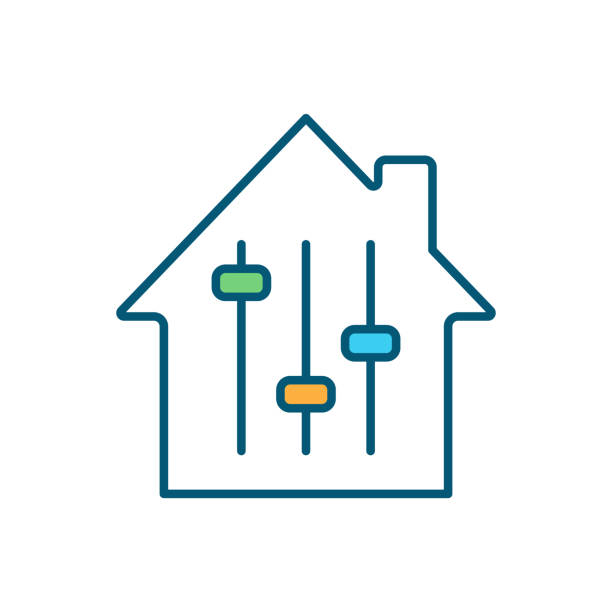“How Much Can You Afford? Calculating Your Home Loan Budget”
Determining how much you can afford for a home loan involves evaluating your financial situation to ensure you can comfortably manage mortgage payments along with other homeownership costs. Here’s a step-by-step guide to calculating your home loan budget:
### **1. **Assess Your Financial Situation**
– **Income:** Calculate your total monthly income from all sources, including salary, bonuses, rental income, and any other earnings.
– **Expenses:** List all your monthly expenses, including utilities, groceries, transportation, insurance, and debt payments.
– **Savings:** Review your savings for the down payment, closing costs, and any additional funds for emergencies or home improvements.
### **2. **Calculate Your Debt-to-Income Ratio (DTI)**
– **Front-End Ratio:** This ratio compares your gross monthly income to your estimated housing expenses (including mortgage payments, property taxes, homeowner’s insurance, and any HOA fees). Lenders typically prefer a front-end ratio of 28-31%.
– **Formula:** \[ \text{Front-End Ratio} = \frac{\text{Estimated Monthly Housing Expenses}}{\text{Gross Monthly Income}} \times 100 \]
– **Back-End Ratio:** This ratio compares your gross monthly income to your total monthly debt payments, including the estimated mortgage payment, credit card payments, car loans, and other debts. Lenders generally prefer a back-end ratio of 36-43%.
– **Formula:** \[ \text{Back-End Ratio} = \frac{\text{Total Monthly Debt Payments}}{\text{Gross Monthly Income}} \times 100 \]
### **3. **Determine Your Down Payment**
– **Down Payment Amount:** Typically, a down payment ranges from 3% to 20% of the home’s purchase price. A larger down payment can lower your mortgage balance and eliminate private mortgage insurance (PMI).
– **Savings:** Ensure you have enough saved for the down payment and additional closing costs, which can range from 2% to 5% of the home’s purchase price.
### **4. **Estimate Your Mortgage Payment**
– **Principal and Interest:** Use a mortgage calculator to estimate your monthly principal and interest payments based on the loan amount, interest rate, and loan term.
– **Formula:** \[ M = \frac{P \times r \times (1+r)^n}{(1+r)^n – 1} \]
– \( M \) = Monthly payment
– \( P \) = Principal loan amount
– \( r \) = Monthly interest rate (annual rate divided by 12)
– \( n \) = Number of payments (loan term in months)
### **5. **Calculate Property Taxes and Insurance**
– **Property Taxes:** Research property tax rates in your area to estimate the annual property tax amount. Divide by 12 to get the monthly cost.
– **Homeowner’s Insurance:** Get quotes from insurance providers to estimate the cost of homeowner’s insurance. Divide by 12 to determine the monthly premium.
### **6. **Include Homeowners Association (HOA) Fees**
– **HOA Fees:** If applicable, include any homeowners association fees in your budget. These fees can vary based on the community and its amenities.
### **7. **Factor in Maintenance and Utilities**
– **Maintenance Costs:** Budget for routine maintenance and unexpected repairs. A general rule of thumb is to set aside 1-2% of the home’s value per year for maintenance.
– **Utilities:** Estimate monthly utility costs, including electricity, water, gas, and trash services.
### **8. **Consider Your Comfort Zone**
– **Affordability:** Ensure that your estimated mortgage payment, including principal, interest, taxes, insurance, and HOA fees, fits comfortably within your budget.
– **Financial Cushion:** Maintain a financial cushion for emergencies and unexpected expenses to avoid financial strain.
### **9. **Use Online Tools**
– **Mortgage Calculators:** Utilize online mortgage calculators to estimate monthly payments and affordability based on different loan amounts, interest rates, and terms.
– **Affordability Calculators:** Use affordability calculators to get a better sense of the price range you can comfortably afford based on your income, down payment, and other factors.
### **10. **Get Pre-Approved**
– **Pre-Approval:** Seek pre-approval from a lender to get a more accurate picture of how much you can borrow. Pre-approval considers your financial situation and provides a more precise estimate of your home loan budget.
### **11. **Adjust Based on Your Goals**
– **Financial Goals:** Consider your long-term financial goals and how the mortgage payment fits into your overall financial plan.
– **Future Plans:** Factor in any potential changes in income, expenses, or financial goals that may affect your ability to make mortgage payments.
### **Example Calculation**
Let’s assume you have a gross monthly income of $6,000, monthly debt payments of $500, and are considering a home loan with a 4% interest rate on a 30-year fixed mortgage.
1. **Calculate DTI Ratios:**
– Front-End Ratio: If your estimated monthly housing expenses are $1,200, then:
\[ \text{Front-End Ratio} = \frac{1,200}{6,000} \times 100 = 20\% \]
– Back-End Ratio: If your total monthly debt payments (including the mortgage) are $1,700:
\[ \text{Back-End Ratio} = \frac{1,700}{6,000} \times 100 = 28.33\% \]
2. **Estimate Mortgage Payment:**
– For a $250,000 loan amount with a 4% interest rate over 30 years:
\[ M = \frac{250,000 \times 0.003333 \times (1+0.003333)^{360}}{(1+0.003333)^{360} – 1} \approx \$1,193.54 \]
3. **Add Taxes and Insurance:**
– If property taxes are $3,000 annually and homeowner’s insurance is $1,200 annually:
\[ \text{Monthly Property Taxes} = \frac{3,000}{12} = 250 \]
\[ \text{Monthly Insurance} = \frac{1,200}{12} = 100 \]
– Total Estimated Monthly Payment: $1,193.54 (mortgage) + $250 (taxes) + $100 (insurance) = $1,543.54
By following these steps and using these calculations, you can determine a realistic and comfortable home loan budget that aligns with your financial situation and goals.









